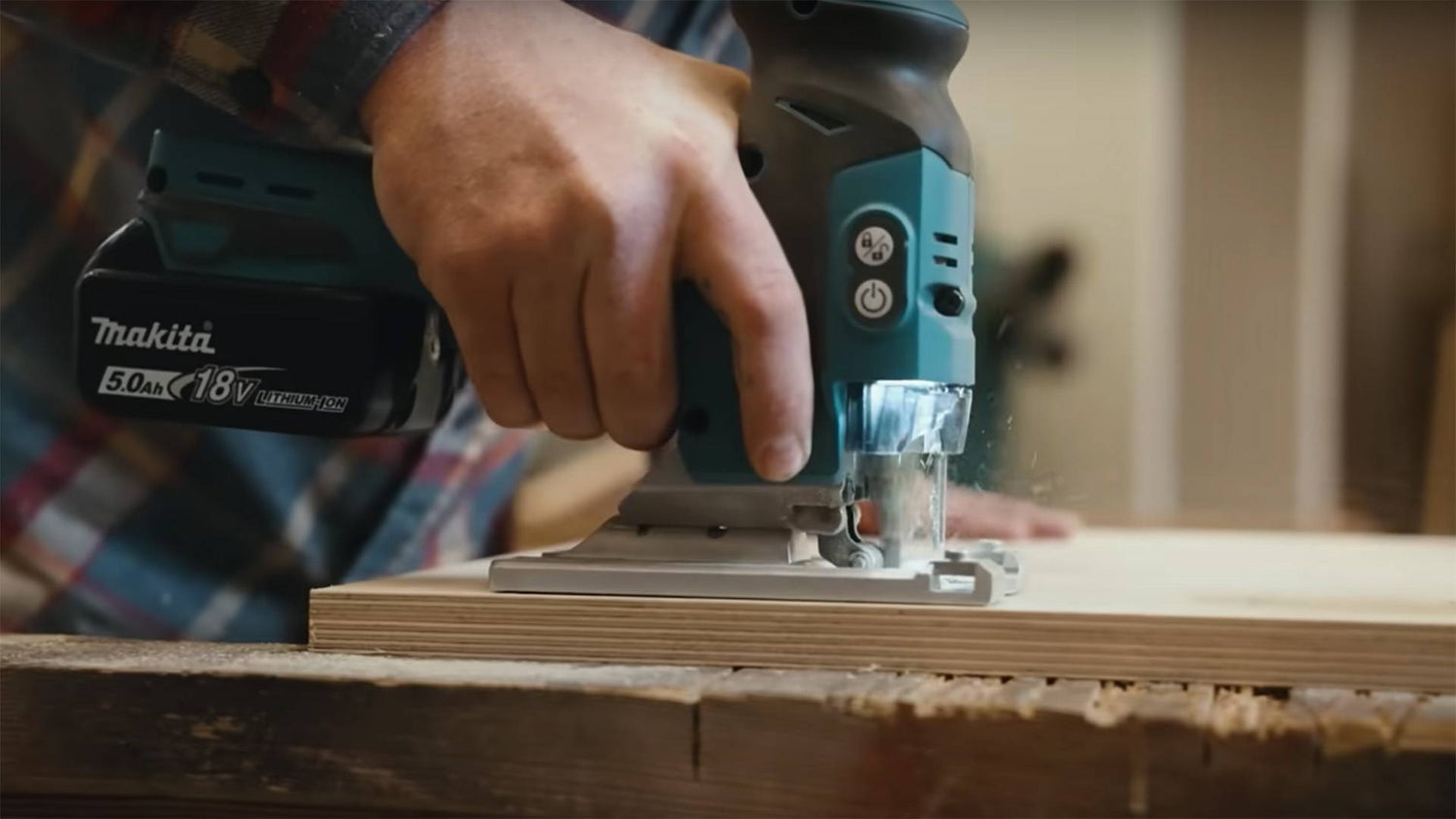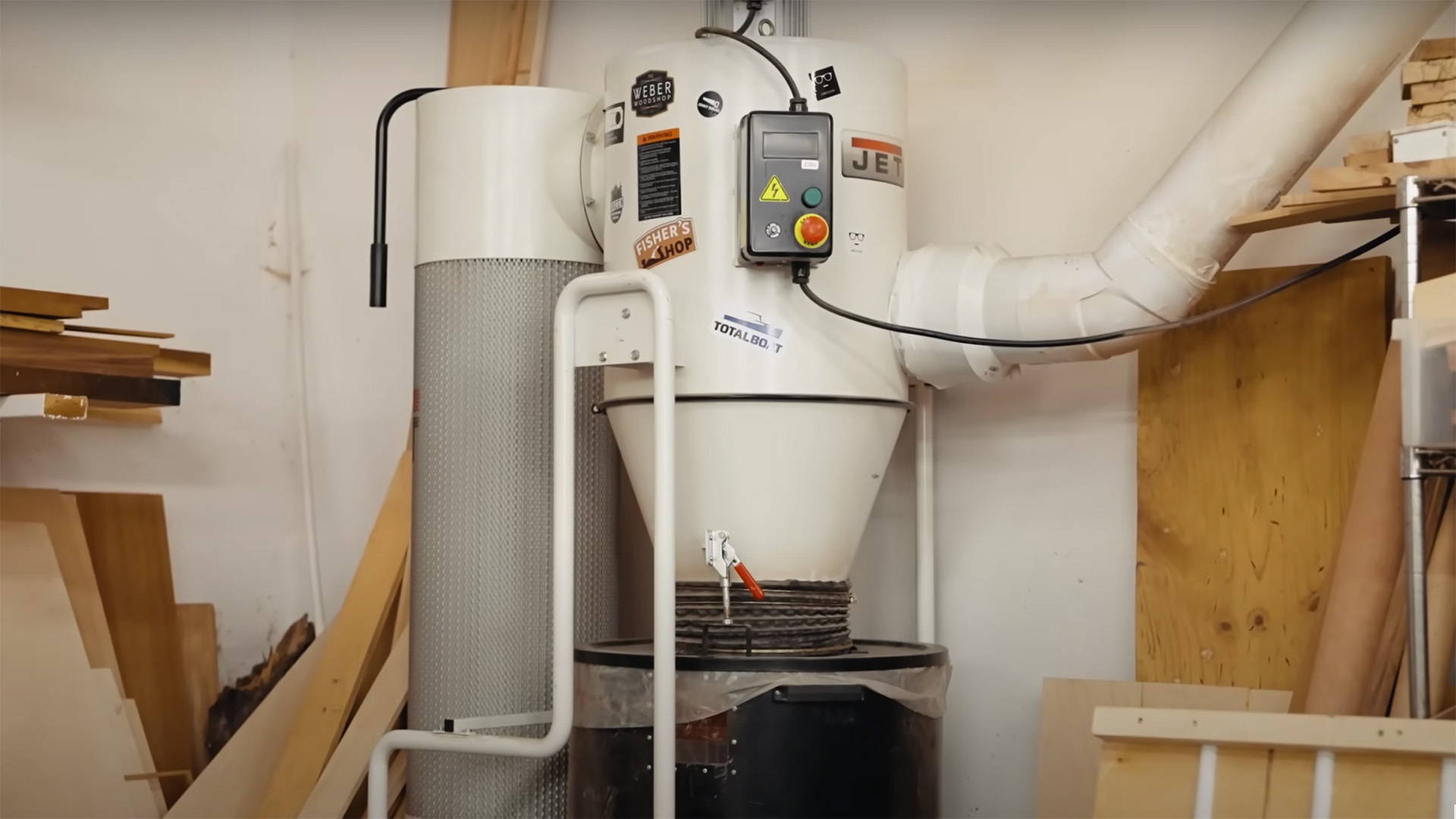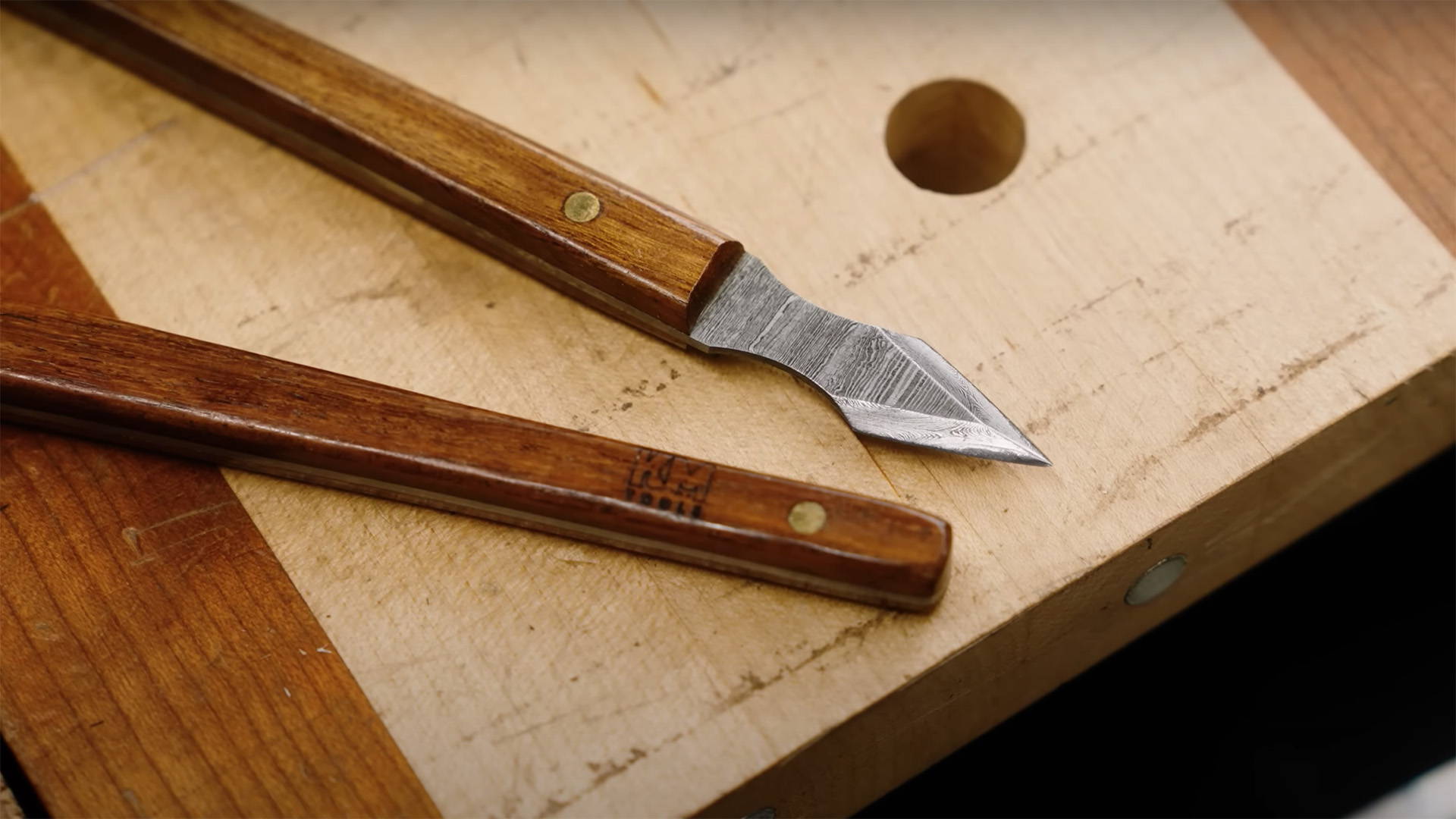Jigsaws are amazing tools for woodworking — but tearout is their Achilles heel.
The up-cutting motion of the blade rips wood fibers from the surface of your boards as you cut…
Leading to ragged edges that can ruin an otherwise clean board.
This is especially a problem with plywood.
Luckily, there are ways to control and stop jigsaw tearout — and I’m sharing three of them with you today.
1. CHOOSE THE RIGHT BLADE
Using the right jigsaw blade is key to reducing tearout.
And the rule of thumb is the more teeth, the cleaner the cut.
Go for a fine-toothed blade with a higher TPI (teeth per inch) for smoother cuts — and a blade with fewer teeth if you’re just trying to cut fast.
2. CUT WITH THE SHOWFACE FACING DOWN
Since a jigsaw cuts up towards the tool, tearout will occur on the tool-side of a board.
That means you can prevent tearout where it matters most by cutting with the showface facing down.
You’ll still get tearout on the top of the board.
But if it’s going to be hidden when your project’s assembled, it’s not that big of a deal.
3. USE BLUE TAPE TO HOLD FIBERS DOWN
This is probably my favorite way to stop jigsaw tearout. And it’s crazy how well it works.
Before grabbing your jigsaw, lay down a strip of blue painter’s tape where you’ll make the cut.
You might have to draw your layout lines on top of it — but so be it.
The tape holds wood fibers down against the cutting direction of the blade… stopping them from tearing out and giving you super clean edges.
Want to learn more tricks for stopping tearout? Read this.
How do you deal with jigsaw tearout? Let us know in the comments below!
Follow us on Instagram @katzmosestools, on TikTok @katzmoseswoodworking, and check out my YouTube channel for more great woodworking content...
And as always, STAY SAFE IN THE SHOP!











8 comments
Walter Scott
The good thing about using the blue tape version is that when you have finished putting a strip in place, like Jonathan you can keep a piece to put on your finger when you cut it.
The good thing about using the blue tape version is that when you have finished putting a strip in place, like Jonathan you can keep a piece to put on your finger when you cut it.
Ken
I’m a custom cabinet installer and a big part of my work is scribe work fitting things to irregular surfaces. Anyhow the typical cutting process involves a jigsaw or freehanding on a tablesaw close to the line, then getting very close with an electric hand planer, then getting exactly on the line with the belt sander. If you’ve read this far through my long winded comment ha ha.. here’s the big tip.. they make up and down cut jigsaw blades. The are a game changer I used to have to sometimes use the jigsaw upside down or use a down cut laminate blade. No more. Starret makes them so does Diablo. Really a game changer.
I’m a custom cabinet installer and a big part of my work is scribe work fitting things to irregular surfaces. Anyhow the typical cutting process involves a jigsaw or freehanding on a tablesaw close to the line, then getting very close with an electric hand planer, then getting exactly on the line with the belt sander. If you’ve read this far through my long winded comment ha ha.. here’s the big tip.. they make up and down cut jigsaw blades. The are a game changer I used to have to sometimes use the jigsaw upside down or use a down cut laminate blade. No more. Starret makes them so does Diablo. Really a game changer.
Nicholas
Another tip, use down-cut blades in your jigsaw if you’re cutting a traced piece, (I.e. scribing an irregular wall onto a piece of pre-finished hardwood).
Still causes tear our, but on the bottom side. To be noted, jigsaws cut up so that the cut process pulls the saw table onto the material for control and stability, down cut blades push the jigsaw away from your board, be aware!
Another tip, use down-cut blades in your jigsaw if you’re cutting a traced piece, (I.e. scribing an irregular wall onto a piece of pre-finished hardwood).
Still causes tear our, but on the bottom side. To be noted, jigsaws cut up so that the cut process pulls the saw table onto the material for control and stability, down cut blades push the jigsaw away from your board, be aware!
Anonymous
Thanks for the tips,
Thanks for the tips,
Tanya
Very helpful tips. I’ve always just used the show face side down method. I’ll definitely be trying the blue tape method. And getting some better blades. 😁
Very helpful tips. I’ve always just used the show face side down method. I’ll definitely be trying the blue tape method. And getting some better blades. 😁
Greg
You can also attach tongue depressors to bottom of saw plate, one in front and one in back. Can just glue or use double sided tape. Attach at right angle to blade. On the front one cut a slot in it about half the width of stick and then attach it so blade sets in the slot. It acts like a zero clearance insert and vastly reduces the tear out..
You can also attach tongue depressors to bottom of saw plate, one in front and one in back. Can just glue or use double sided tape. Attach at right angle to blade. On the front one cut a slot in it about half the width of stick and then attach it so blade sets in the slot. It acts like a zero clearance insert and vastly reduces the tear out..
Anonymous
Great tips!! Like the face down and tape methods!!
Great tips!! Like the face down and tape methods!!
Vernon Walker
Great tips! I’m confused a bit around the blades that saw up cut versus traditional down cut. Is it just that simple? And so I should just turn the board over?
Great tips! I’m confused a bit around the blades that saw up cut versus traditional down cut. Is it just that simple? And so I should just turn the board over?